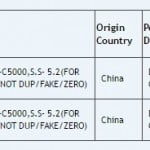It’s easy to understand that customer service in social media, as in any other channel, is conceptually a good idea. Assigning a quantifiable ROI to it, however, is another story. That’s what Wayne Huang, a researcher at Twitter, decided to tackle with what began as a pet project to examine that “electrifying moment of happiness” when a brand responds to a customer on Twitter.

“The majority of people are not getting any responses from brands,” says Huang, which is something Twitter is trying to change. The goal of his research? “Prove out that customer service has actual value.” That value comes in the form of a significant increase in “willingness to pay” after a brand responds on Twitter – a willingness that persists even months later.
“You’re just not expecting someone to reach out and help you on a public medium like this,” says Huang. “There’s definitely something that registers deep inside people’s emotions, and they remember it and are willing to pay more for it.”
How much more are they willing to pay? $9 to airlines, on average, but if the response is super-fast – within 6 minutes – that number jumps to nearly $20. “To get responses back quickly – people remember that, because it’s just busting through expectations,” says Huang. But, he adds, “every minute really counts here” because the dollar amount falls quickly as the response time increases.
Customers who received responses from brands “felt overwhelmingly much more positive towards the brand” vs. those who did not receive a response. “Even just acknowledging someone’s tweet, even if you can’t solve it at that moment, that can really add a lot of value,” Huang notes. “When you do respond, it’s a strong social signal that [your brand] really takes customers very seriously… It takes just a few seconds, but it makes a huge difference.”
Huang’s research is important to Twitter because it also established a direct link between customer service responses and higher satisfaction with Twitter as a platform.

“We just want to get users to have more positive interactions with brands because that’s really where we think the light bulb goes off for users and they’re like, ‘Oh, this is what makes Twitter so unique and different’” from other social media platforms, Huang says.
Last year, Twitter published a playbook called Customer Service on Twitter and Huang’s colleague, Jeff Lesser, talked about it here.
When asked for his advice for brands, Huang quoted Twitter co-founder and CEO Jack Dorsey: “Expect the unexpected, and whenever possible, be the unexpected.”
Hear more from Huang’s interview with Focus on Customer Service co-hosts Dan Gingiss and Dan Moriarty by listening to Episode 27 below, or on iTunes or Stitcher.
Here are some of the key moments of the interview and where to find them:
1:02 How and why Wayne decided to research customer service at Twitter
5:10 The paradigm shift of increasing customer expectations
7:57 The methodology of Wayne’s customer service study
13:28 How replying to Tweets can directly impact revenue
15:06 Why is customer service so important to Twitter?
16:32 How response time impacts revenue potential
19:18 What should small businesses take from this research?
20:54 How responding to Tweets drives higher satisfaction than other channels
22:56 The difference between response time and resolution time
24:18 Why satisfied Twitter users are twice as likely to talk about the brand with friends and family
25:37 What Wayne is looking forward to researching next
27:14 Wayne’s advice to brands given the results of his research
31:20 How is the customer service landscape going to change on Twitter?
If you’ve experienced great customer service on Twitter or another social channel, let us know by tweeting with the hashtag #FOCS, and we’ll try to get that brand on a future episode.










